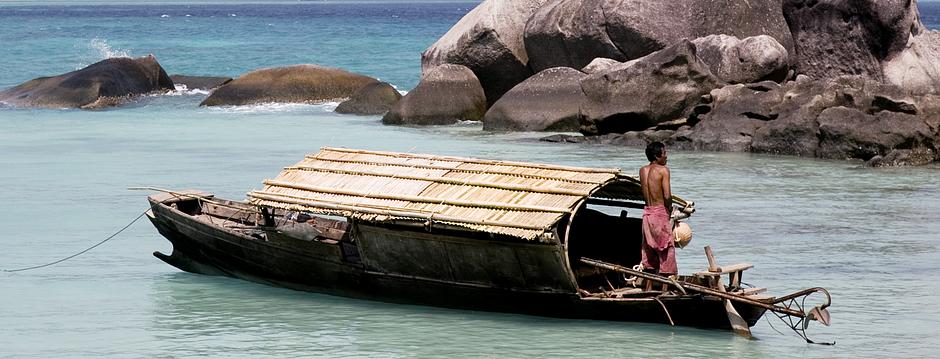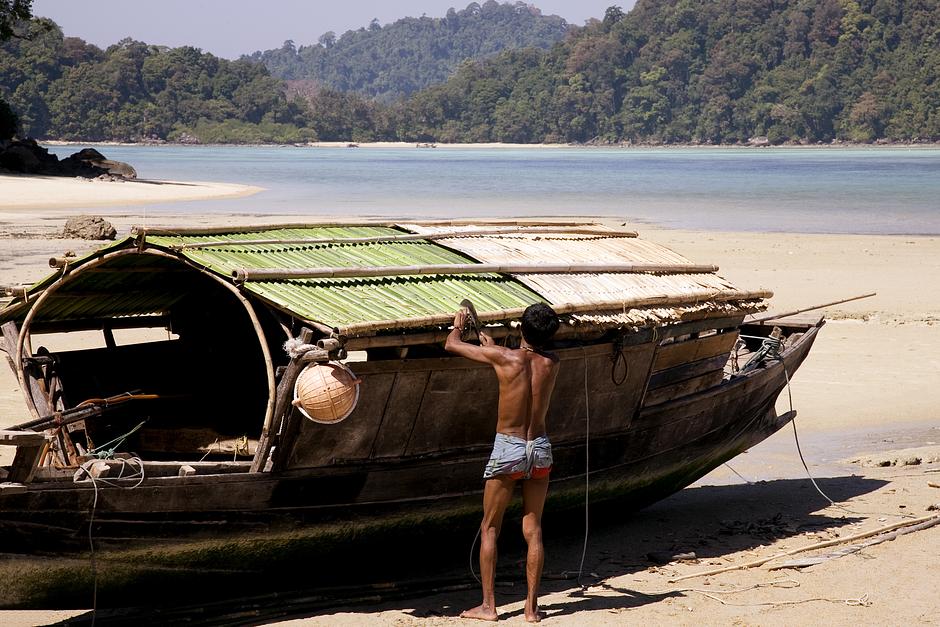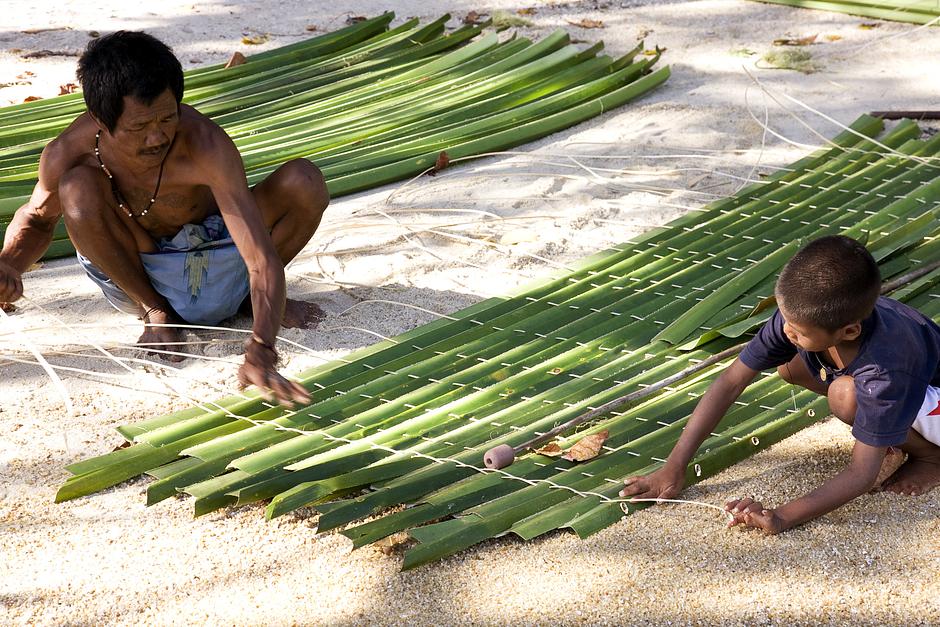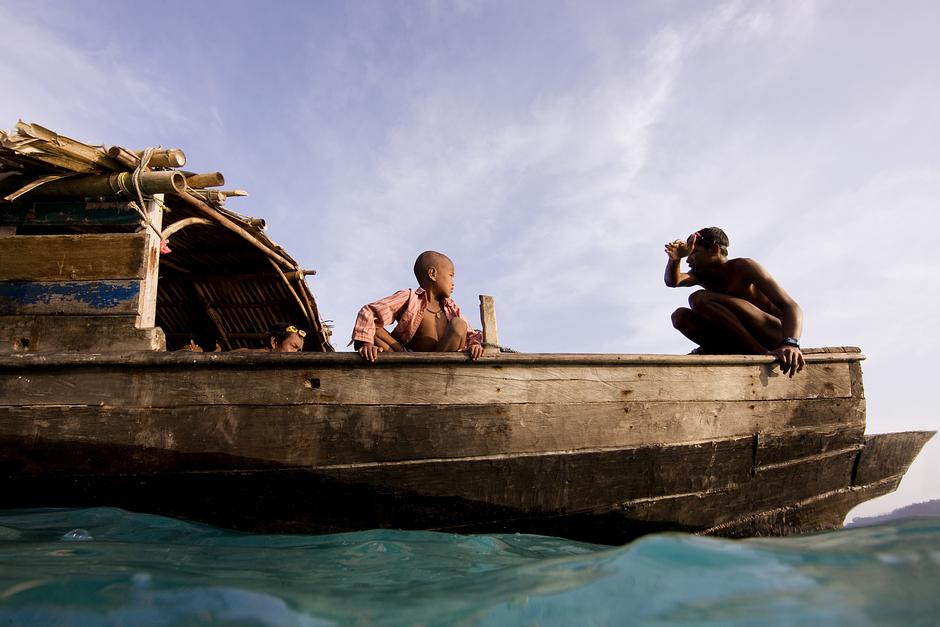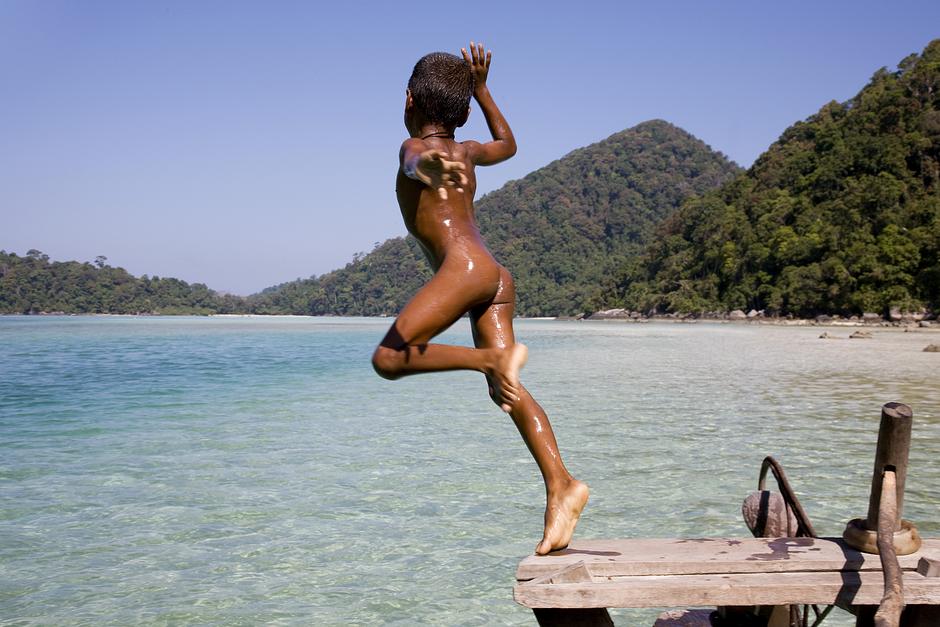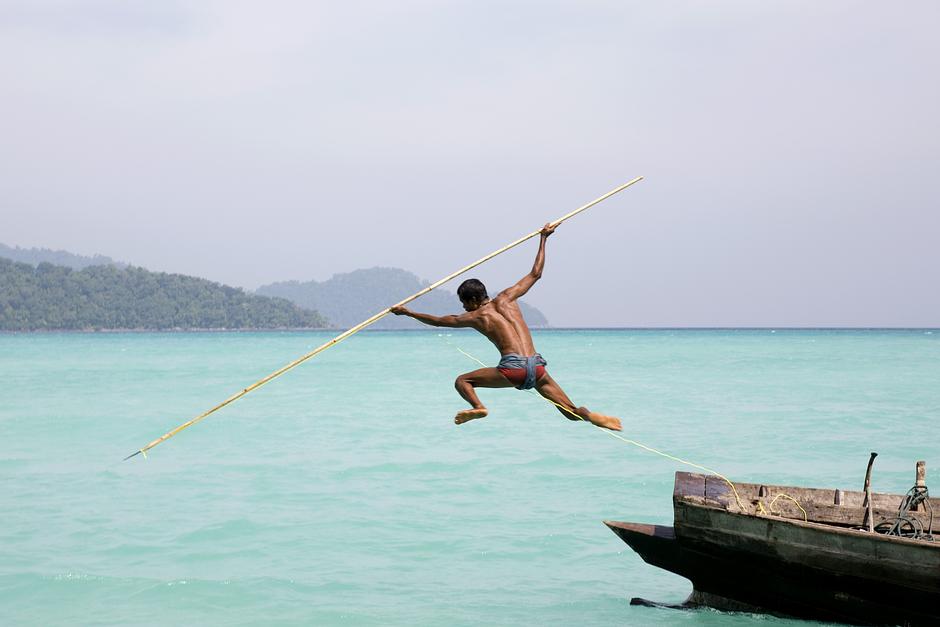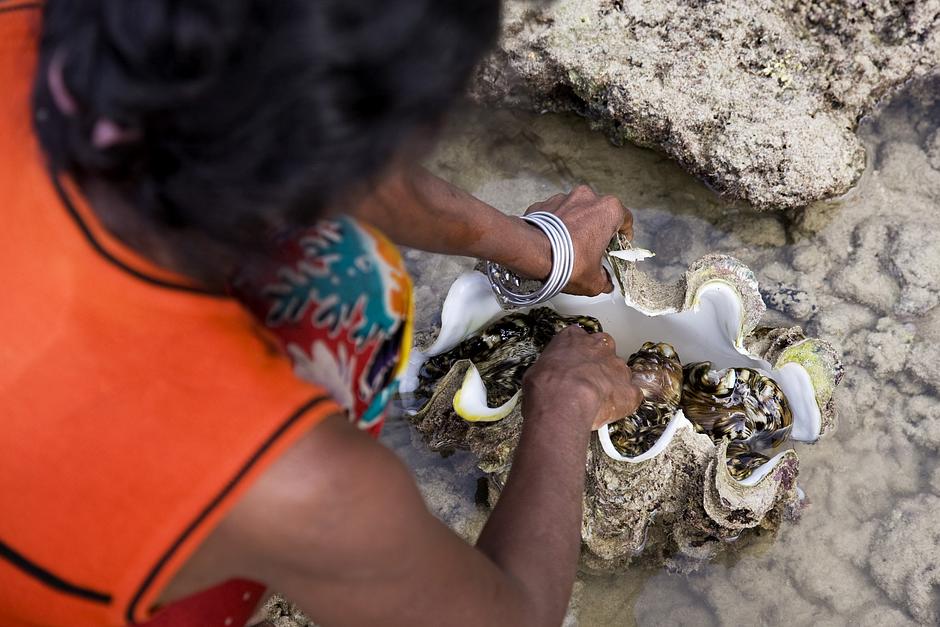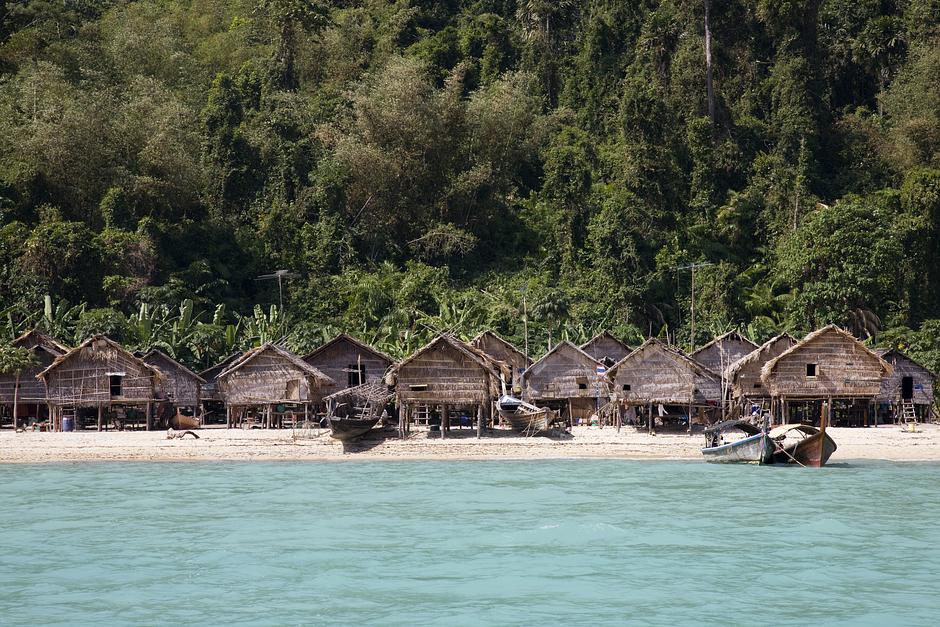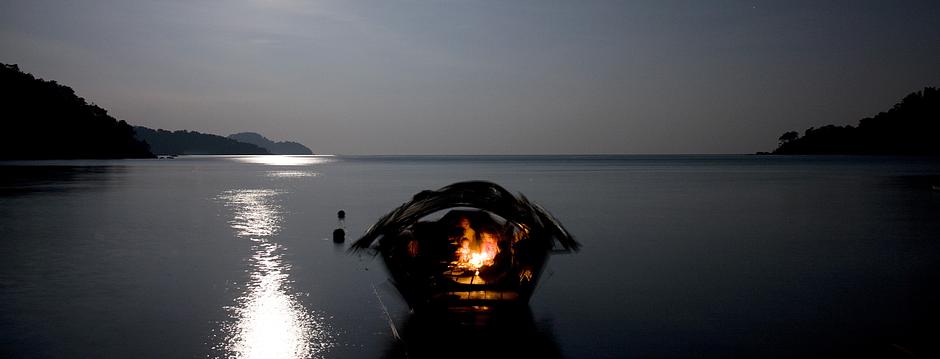'The ocean is our universe'
‘Everything happens at sea. We are not people who are bound to any land.’ The extraordinary lives of the Moken, or Sea Gypsies, of south-east Asia.
The Moken are a semi-nomadic Austronesian people, who live in the Mergui Archipelago, a group of approximately 800 islands in the Andaman Sea that is claimed both by Burma and Thailand.
Thought to have migrated to Thailand, Burma and Malaysia from Southern China approximately 4,000 years ago, the Moken have traditionally lived on hand-built wooden boats called kabang for most of the year, migrating in flotillas between islands according to factors such as subsistence needs, wind patterns, security concerns and disease. They have historically shunned material possessions and rejected outside technology.
From May to October, when the south-western monsoon brings heavy rain and big seas, they have traditionally lived – as the semi-nomadic families still do – in temporary stilt houses on the eastern side of the islands, where they find protection from blustery winds.
Today, their maritime existence that recognizes no national boundaries is endangered. A peaceable people, they have frequently been persecuted by the Burmese and Thai governments, both of whom are wary of their border-less lives, and have tried to settle the Moken permanently in national parks.
Their semi-nomadic numbers have diminished in recent years due to political and post-tsunami regulations, companies drilling for oil off-shore, governments seizing their lands for tourism development and industrial fishing. ‘Today, the big boats come and take every fish. I wonder what they will do when the ocean is empty?’ Hook Suriyan Katale told film-maker Runar J. Wiik, who has created the website Moken Projects to raise awareness of their situation. Many Moken now live permanently in bamboo hut ‘villages’, selling handicrafts as souvenirs and working as boatmen, gardeners and garbage collectors for the tourist industry.
A few Moken families, however, still sail across the turquoise waters of the Mergui Archipelago in their kabang for seven or eight months of the year. ‘For the Moken, the ocean is our entire universe,’ says Hook Suriyan Katale.
Award-winning photographer Cat Vinton spent 6 weeks with a semi-nomadic family in the Surin Islands. Her photographs are of Father Pe Tat, Mother Sabi and their children.
© Cat Vinton/Survival
Pe Tat’s kabang, which is open at both ends, is moored close to one of the granite headlands of the Surin Islands.
The Moken’s traditional kabang is made from wood and lashed together with bamboo pegs and rattan rope. Its hull is carved, the stern forked and the roof thatched with dried palm leaves. Only a few species of trees are traditionally suitable for kabang construction, including the rakam (salacca) tree, a fibrous plant that swells when wet. Pandanus leaves from the forest are used to weave mats, baskets and boxes.
According to anthropologist Jacques Ivanoff, the Moken’s creation legend has it that an ancestral island queen, named Sibian, declared that the kabang would represent the human body, with the front of the boat a mouth that eats (‘okang makan’) and the rear that defecates (‘butut mae’).
© Cat Vinton/Survival
Pe Tat makes a new roof for his family’s kabang from palm leaves. Before a tree is cut, permission is sought from the spirits.
A Moken proverb holds that, ‘If your young man is able to build a boat, make oars or sails, if he knows how to use the pole to harpoon the turtles, then I will give my daughter to him. If not, I will never allow her to leave.’
(Moken proverb courtesy of Jacques Ivanoff).
© Cat Vinton/Survival
Imparting traditional wisdom to children ensures that their way of life is perpetuated.
Outside pressures, however, are making it increasingly difficult to pass on centuries-old rituals and skills.
‘This generation no longer knows how to make kabang boats,’ says Hook Suriyan Katale. ‘Today there are only three or four people left who know the ancient craft.’
Restrictions on the harvesting of wood have also been introduced in the national parks.
© Cat Vinton/Survival
The Moken’s extraordinary knowledge of the sea, winds and lunar cycles is not written down. Theirs is an oral history, rich in myths, legends and songs; children learn to ‘read’ nature through observation and experience.
One myth tells of the la-boon, or ‘the wave that eats people’, which is invoked by angry ancestral spirits. Legend has it that just before the la-boon arrives, the sea recedes.
When the waves receded prior to the tsunami of December 2004, leaving kabang grounded near the coral, the elders of a Moken village in Thailand recognized the ominous signs and led their community and tourists safely to higher ground. Only one disabled Moken man is known to have been killed by the tsunami.
‘The Moken live close to nature … ’ says Narumon Arunotai, a Moken researcher at Chulalongkorn University in Bangkok, ’… their lives depend and revolve around it, so they have developed a sharp, vigilant instinct about danger. They have wisdom and knowledge that we can can learn from.’
© Cat Vinton/Survival
Pe Tat burns algae from the bottom of the kabang.
© Cat Vinton/Survival
It is thought that Moken children learn to swim before they can walk.
A recent scientific study conducted by Lund University in Sweden showed that the eyesight of Moken children is 50% more powerful than that of European children. Over hundreds of years they have developed the unique ability to focus under water, using their visual skills to dive for food on the sea floor. ‘They use the optics of the eye to the limits of what is humanly possible,’ says biologist Anna Gislén.
One of the Moken’s epic tales recounts that, ‘The Moken are born, live, and die on their boats, and the umbilical cords of their children plunge into the sea.’
© Cat Vinton/Survival
‘Eh! Listen ancestors, we Moken are going out to sea to harpoon the fish,’ recounts a Moken tale. ‘Do what you can to make it possible for us to be successful with our harpooning!’
The Moken eat fish, dugong, sea-cucumber and crustaceans, which they catch with harpoons, spears and hand-lines. Hook Suriyan Natale says that such sustainable methods ensure that ‘there will always be fish left in the sea.’
They also use nets to catch shell-fish from the rock pools and forest shallows. Before certain species are harvested, the Moken make spiritual offerings as a mark of respect, using the spirit pole or ‘lobong’, which bears the faces of protective spirits.
(Moken tale courtesy of Jacques Ivanoff).
© Cat Vinton/Survival
The Moken are skilled navigators and divers. Pe Tat wears home-made goggles made from wood and plastic fashioned from water containers. The lenses are constructed from the glass of broken bottles and glued to the goggles with tree-sap.
The Surin Islands were established as a national park in 1981, which increased the area’s commerce and tourism development. Restrictions on the fishing and foraging activities of the Moken were imposed, although many Moken – even the ‘settled’ families – still live on resources found on land and at sea.
While other islands and coastal areas have suffered from the impact of human settlements, the Surin Islands have remained largely unaffected by the presence of the Moken. Like many tribal peoples, they take from their environment only what they need to survive. The nomadic nature of the traditional way of life also means that forest and marine resources are rotated, and no one resource or area is over-harvested.
© Cat Vinton/Survival
Sabi catches crab, lobster, eel, sea urchin and clam in the rock pools and mud flats, and digs for sand worm along the water line.
Some are kept for her family, the rest bartered or sold together with items such as dried sea cucumber, pearl oyster, turtle shell, edible birds’ nests and woven pandanus mats. These have traditionally been traded with taukay (middlemen) for rice, cooking oil, nets and other daily necessities.
© Cat Vinton/Survival
Pe Tat, Sabi and family also rely on forest products such as fruit, roots, honey and wild yam; over 150 plant species are used for food, medicines, building materials and fuel.
During the monsoon, Moken families living a traditional way of life grow rice and millet on shore, and hunt game such as wild boar and small deer.
© Cat Vinton/Survival
A Moken village on one of the Surin Islands.
The houses were built for the Moken by the Thai government after the 2004 tsunami destroyed many kabang. There are few traditional kabang left in the village today; most boats are now standard Thai long-tails. Post-tsunami development has also meant that families have lost access to areas in which they once fished.
The Moken of the Mergui Archipelago face many threats: from racism (they are regarded as ‘backward’ by many on mainland Thailand) and assimilation into mainstream society, to being shot at or arrested by Burmese border guards. Some are becoming dependent on alcohol, which is introduced largely by visiting tourists. A greater reliance on consumer goods has also led to a dependency on a cash economy.
Separation from their ancestral environments and traditions is, more often than not, catastrophic for the long-term mental and physical health of tribal peoples such as the Moken. ‘The families in the permanent villages are lost,’ says Pe Tat. ‘They do not know what to do with themselves, because the life they have always known has gone. They are bored, so they turn to alcohol.’
According to researcher Narumon Arunotai, substance addiction has killed many Moken men. ‘As a result, the widows have to shoulder a much greater responsibility for dependents in the household,’ she says.
© Cat Vinton/Survival
Under a full moon on the Andaman Sea, Pe Tat, Sabai and their children eat dinner on their kabang.
They are one of the last semi-nomadic families still sailing the deep, clear waters of the Surin Islands.
‘The Moken are like the turtle,’ says Pe Tat, ‘We have always lived between the land and the sea. This is what we know, who we are and where we belong.’
© Cat Vinton/Survival
Other galleries
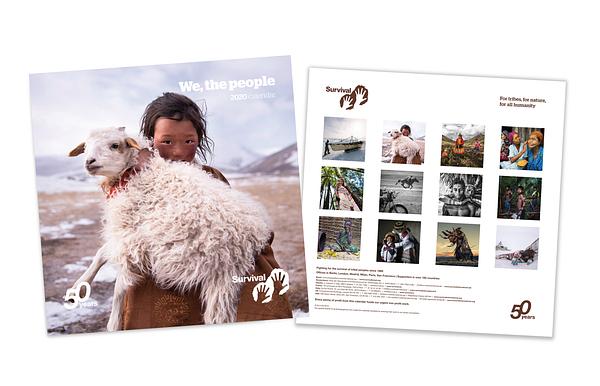
“We, the People” 2020 Calendar
Discover a new tribal portrait each month with the Survival International “We...
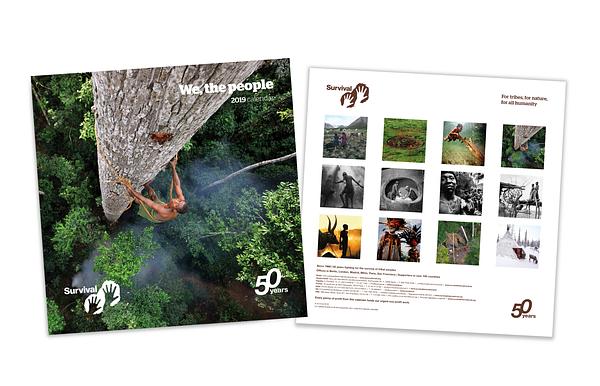
“We, the People” 2019 - The 50th anniversary Calendar
Our “We, The People” 50th Anniversary Calendar features stunning portraits of...
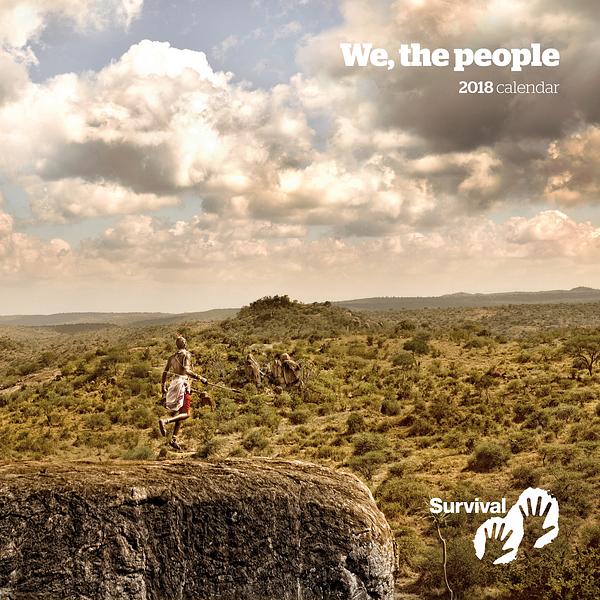
"We, the People" 2018 Calendar
Discover a new tribal portrait each month with the Survival International "We...

